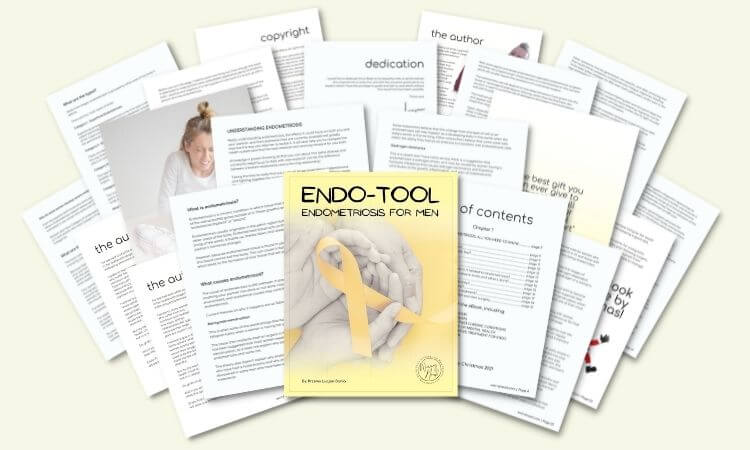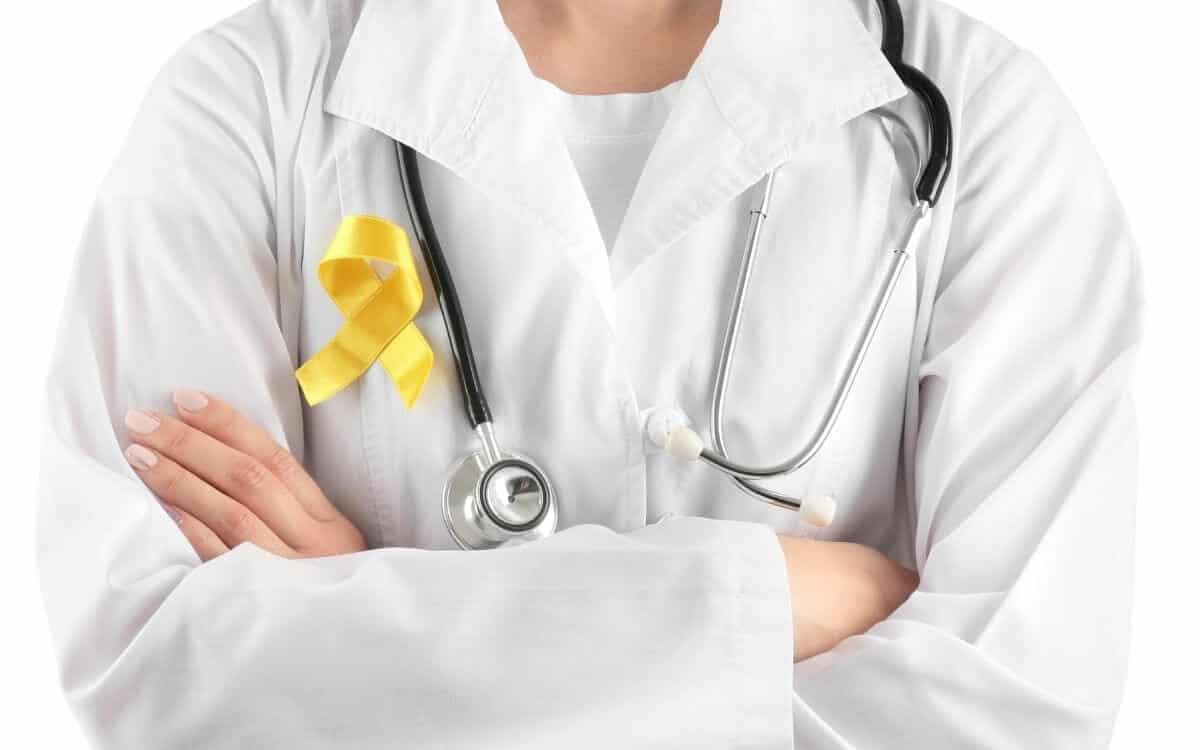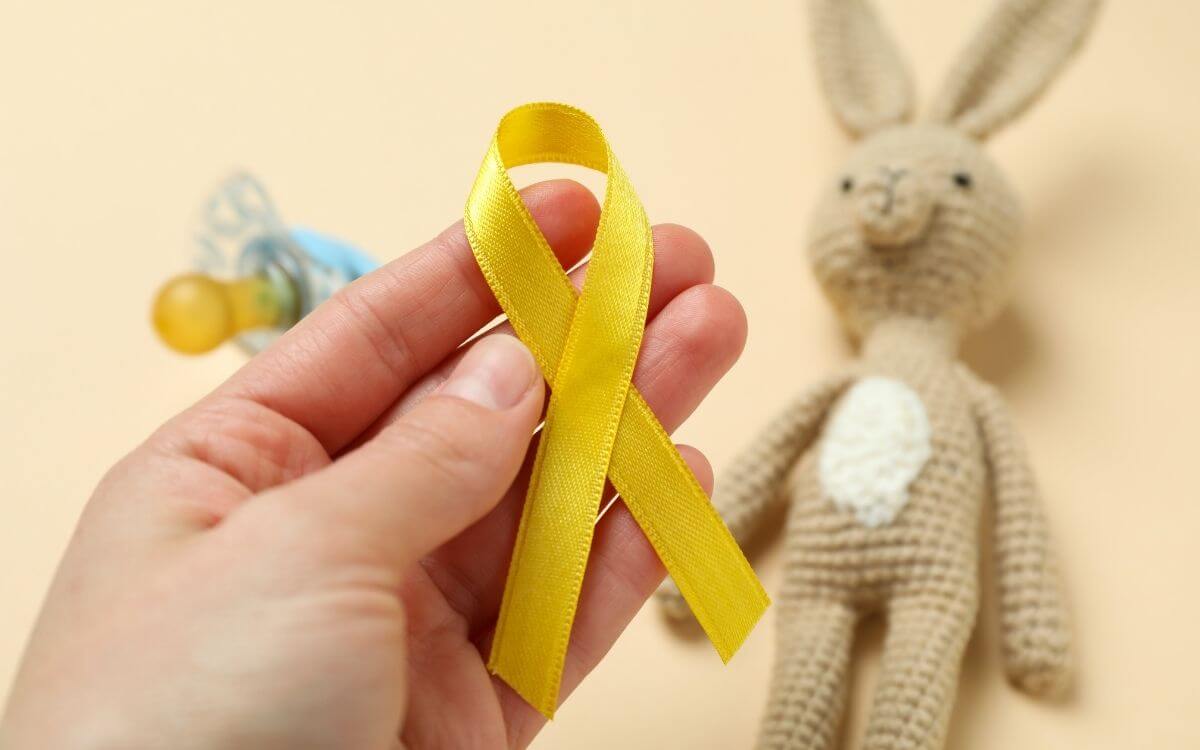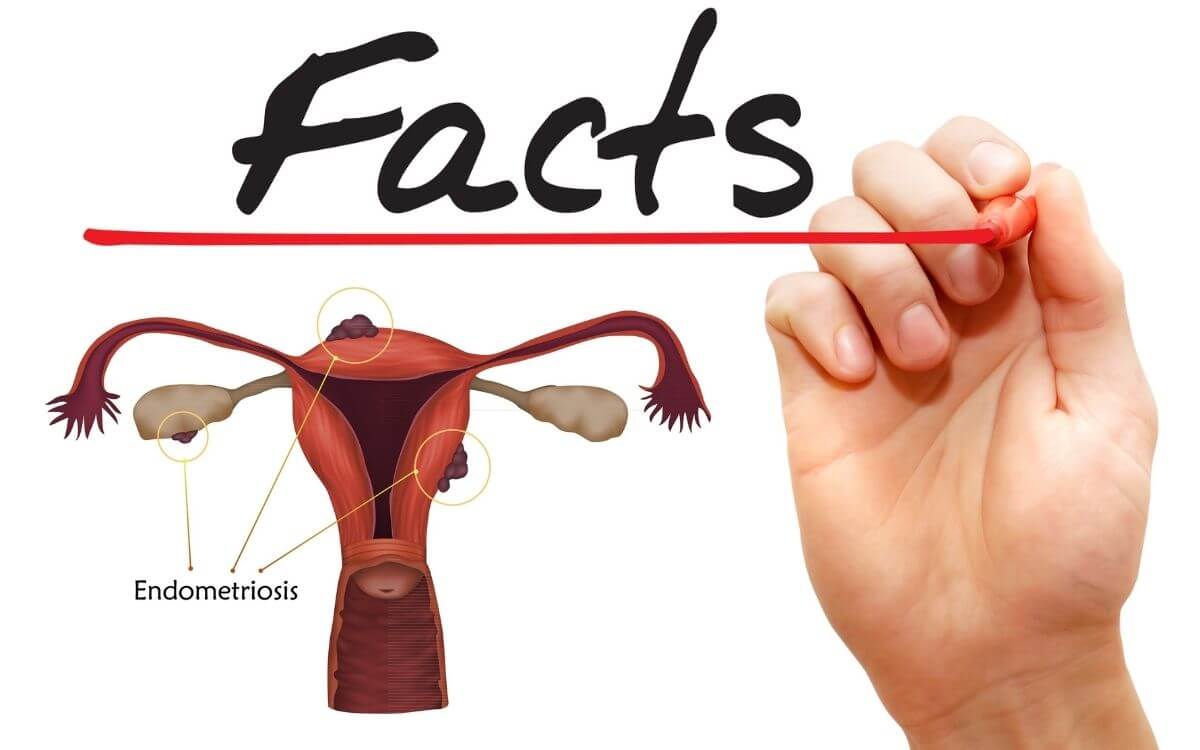17 facts every man should know about endometriosis! From a husband whose wife has endometriosis.
The 17 facts men should know about endometriosis!
Gentlemen, this post gives you all the important facts men should know about endometriosis. What are they?
Here’s the short answer:
- Endometriosis is complicated.
- Endometriosis needs estrogen to grow.
- It isn’t an autoimmune disease.
- Nobody knows the cause.
- Pain is the main symptom.
- The severity doesn’t correlate with the pain.
- It’s not just a painful period.
- Endometriosis is hard to diagnose.
- It affects every woman differently.
- Not every woman is diagnosed.
- There is no cure for endometriosis.
- Pregnancy and hysterectomy aren’t a cure.
- She isn’t infertile.
- Financial costs of endometriosis.
- Not all surgeries are equal.
- Forget about her core!
- The couch is not her friend.

Endometriosis is complicated.
Endometriosis is a condition where tissue similar to the lining of the womb starts to grow in other places, such as the ovaries and fallopian tubes.
Endometriosis is much more than simple, so-called “killer menstrual cramps”.
There are many symptoms, including painful ovulation, pain during and after sex, abnormal bleeding, chronic pelvic pain, fatigue.
Endometriosis is not just about “painful periods”.
It isn’t what most websites describe as “bits of normal endometrium implanted in abnormal places, caused by backflow menstruation” either.
Despite being among the most common diseases, its complexity has genetic and molecular origins.
But it doesn’t have to be complicated, my “Endo-Tool, Endometriosis for Men” e-Book explains endometriosis in depth. I give you the 1st chapter FREE. It contains 20 pages filled with value, such as:
- What is endometriosis?
- What are the symptoms?
- What causes endometriosis?
- What does endometriosis look like?
- What are the stages?
- What are the types?
- What is adenomyosis and how is it related to endometriosis?
- Why do some women develop severe endo and others don’t?
- Does endometriosis cause infertility?
- How is endometriosis diagnosed?
- Do types and stages affect the treatment?
- Recurrence of endometriosis after excision surgery.
Get FREE “Endo-Tool”
Endometriosis for Men e-Book

Endometriosis needs estrogen to grow.
There are hormonal treatments that can slow down or even stop the production of estrogen.
The commonly used to treat endometriosis hormones are oral contraceptive pills, progestins, GnRH-analogues, and the Mirena coil. My wife doesn’t take either of them because it badly affects her mood.
The endometrial tissue thickens and bleeds, just as the normal endometrium does during the menstrual cycle.
Researchers say that women with endometriosis have a problem with estrogen dominance. They have a higher-than-usual amount of estrogen in their bodies as compared to healthy women.
Higher estrogen level is believed to contribute to the growth of endometrial lesions in the body.
It isn’t an autoimmune disease!
The causes of endometriosis vary from woman to woman and are still poorly understood.
That’s being said, they may be the combination of multiple factors including genetics and immune dysfunction, however, endometriosis has not yet been classified as an autoimmune disease.
Your partner’s immune system protects your body from “invaders”. If she has an autoimmune disease, her body attacks itself, as if it were a foreign invader. That’s not the case for endometriosis.
Nobody knows the cause.
And so the question remains… Endometriosis is also known as “invisible illness” or ” ghost disease”, but the pain is very real!
All we know is that the tissue called “endometrial-like cells” can grow on various abdominal organs like the bladder, bowel, ovaries, kidneys. But it can even grow in the lungs and brain.
Endometriosis can get so bad that it can put your partner’s abdominal infrastructure to a standstill.
It causes a build-up of damaged tissues that form into masses known as fibrosis or tumors that sit in her body and grow.
Doctors know how to describe things but don’t know what is the cause. There are only theories…

Endometriosis is hard to diagnose.
Imagine a scenario… you’re about to share an intimate moment with your girl, but she starts to feel a sharp pain in her vaginal or pelvic area. She tries to ignore the pain but it only gets worse.
You may believe it’s your “great size” and feel proud of it, however, it is not necessarily the case.
When she goes to see her doctor, she can’t tell him what’s wrong. He may recommend a pelvic exam and tests to try to figure out the cause. In the meantime, your partner is left with more questions than answers.
It can be difficult to diagnose endometriosis because her symptoms can vary considerably and differ from other women’s symptoms. Besides, many other conditions can cause similar symptoms.
Getting diagnosed with endometriosis may take some time. Roughly 7 to 8 years! These are the facts men should know about endometriosis!
Pain is the main symptom.
The main symptom of endometriosis is pain:
- pain in your lower tummy (pelvic pain)
- pain in your lower back (pelvic pain)
- pain is usually worse during your period
- period pain that stops you from doing simple chores
- pain during or after sex
- pain when peeing or pooing during your period
Endometriosis can cause different kinds of pain such as stabbing, sharp, dull, wavy, twisting. I saw my wife jump out of nowhere countless times.
Such pain may get worse throughout the menstruation cycle and can be so constant that never go away.
The severity doesn’t correlate with the pain…
Although there is a significant number of women with endometriosis, some of them remain asymptomatic. About one-third of women with a degree of visible endometriosis have no correlation with the degree of pain they experience.
The location of endometriosis doesn’t always correlate with the depth and volume of it, therefore pain is thought to be related to the location of endometriosis rather than its volume.
It’s not just a painful period!
“Oh yeah, I get really bad periods, too!” many women who don’t understand endometriosis say it.
And here are the facts men should know about endometriosis…
Menstruation usually happens once a month, endometriosis pain doesn’t give a monkey about time, it doesn’t know math.
Periods themselves do not hurt, it is due to the hormones that are released during the period and they cause the uterus to contract.
Endometriosis cells react in the same way to a period, except these cells are located outside of the womb. So, adding more estrogen being released, makes contractions and pain stronger.

It affects every woman differently.
Endometriosis affects every woman differently meaning that there’s no one treatment that will work for every woman.
Your partner should discuss her full range of symptoms and treatment options with the doctor. If she’s not being given clear options that explain how the treatment offered will treat her symptoms, find another doctor.
She has the right to take a second opinion. She needs a doctor you can trust, not a lazy git!
Not every woman is diagnosed.
Endometriosis is extremely difficult to diagnose, taking on average 7 to 8 years. You must NOT listen to doctors saying that an X-Ray, ultrasound or MRI will diagnose her. That’s absolute rubbish!
The only and definitive way to know if she has endometriosis is with a surgery called “laparoscopy”, which is done by a skilled specialist who knows what to look for.
Because it is so hard to diagnose, and because of a lack of knowledge from general practitioners, there are often long delays. It is seven to eight years on average but it can take up to 12, even 20 years.
Don’t waste your time with her doctors who don’t know about endometriosis, find a good specialist for her today!
After all, talking of facts men should know about endometriosis – it will affect your life too my friend.
There is no cure for endometriosis!
Gents, not only was there no cure, but it is certainly a lifetime of pain for her, hormonal insanity (which by the way, will affect you), systemic inflammation, chronic fatigue, even fertility issues.
Have I mentioned an enormously bloated endo-belly? Not all women experience that, but many do.
Endometriosis can steal her energy, vitality, a job, her fitness, and knowing that there is no cure for it, eventually, steal happiness.
The importance of your support is extremely important. Fight for her, especially with the doctors, if she feels a lot of pain.
Because even though there is no cure, early diagnosis can avert her surgery and the severity of endo.
Pregnancy and hysterectomy aren’t a cure!
Let’s set it once and for all – none of the above solves the problem.
Hysterectomy is not a cure for endometriosis. So, if one doctor tells you this – run and get a second opinion. Pregnancy is not a cure for endometriosis either.
Being pregnant may provide temporary relief from her symptoms but it does NOT cure the condition. Equally, she’ll be unable to get pregnant after a hysterectomy but it is NOT a cure either.
Conclusion – ignore people who tell you or your partner that pregnancy and hysterectomy are the cure!

She isn’t infertile…
Gents, if you want kids, rest assured – studies have found a relationship between endometriosis and infertility, yes, but not all the women with endometriosis have infertility.
Here are studied facts men should know about endometriosis;
It’s estimated that normal couples have a 15-20% fertility rate but in women, with endometriosis, this may only be 2-5%. That means, your partner is still infertile.
Looking at it from a different angle, half of all infertile women have endometriosis, and up to 50% of women with endometriosis are infertile.
Endometriosis lesions can block or scar a woman’s reproductive organs, making it harder for the egg and sperm to meet up.
Additionally, it’s possible that the scarring prevents the endometrium from developing properly each month (implantation).
Treatment for infertility includes surgery to remove scars, endometriosis lesions, and endometriomas.
There are also medications to increase ovulation, and lastly – IVF.
Not all surgeries are equal.
What types of surgery are used to treat endometriosis?
Laparoscopy – it is a minimally-invasive surgery, using a small, slender camera called a laparoscope and only requires small incisions to see into the abdomen. Laparoscopy is performed under general anesthesia and she won’t feel anything.
Laparotomy – it is a bigger, open surgery. This is considered major abdominal surgery. There are larger incisions than laparoscopy, but in the same way as with laparoscopy, laparotomy is done under general anesthesia, so that she’ll be asleep and won’t feel pain.
Hysterectomy – this is a procedure is used to treat more severe endometriosis when fertility isn’t an issue. If she has this surgery, she’ll be no longer able to carry a pregnancy herself. But if her ovaries are preserved, the eggs could still be used!
Financial costs of endometriosis…
Endometriosis is costly but it doesn’t just cost dollars… The quality of her life doesn’t accurately capture the toll endometriosis has on women.
Studies from 2011 showed, that more than 1400 women lost more than 11 hours of work each week (my wife including).
Another study from 2012, estimated that endometriosis costs affected women more than $10,000 per year. Endometriosis also interferes with sexual pleasure and satisfaction.
So, as you can see, both – your partner and yourself lose a lot.
Forget about her core!
If she has chronic pelvic pain, her pelvic floor could be overactive rather than weak. That is the case for my wife, not only she use to be a dancer, her core itself is tight.
This means that exercises such as Pilates, which she really likes – doing a plank or personal workout may not be right for her.
If she can, she should find a pelvic physiotherapist to get some advice. Light exercising is advised, but she should not overdo it!
The couch is not her friend.
Talking of exercise – it is often difficult for people suffering from chronic pain to do that but endometriosis gets worse when women don’t move. She doesn’t have to go to the gym or run a marathon. Walking, trekking or swimming are fine.
Endometriosis is an inflammatory condition.
This means that anything she can do to help her decrease whole-body inflammation is helpful.
Research showed that as little as 20 to 30 minutes a day of activity, such as walking or swimming, can have anti-inflammatory effects.
So ideally would be if you could motivate her by keeping her company.
Summarising…
The name “endometriosis” doesn’t reveal much about this condition. Some people even struggle to pronounce it!
Endometriosis (endo, for short) gets its name from the endometrium the thin layer of tissue that lines a woman’s uterus.
Common sites for endometrial growths (called lesions) are the ovaries, fallopian tubes, the outer surface of the uterus, the ligaments, and other tissues that hold the uterus in place.
The number of these lesions can vary and range in size from a few millimeters to grapefruit size. However, it doesn’t reflect the level of pain experienced.
Saying that endometriosis diagnosis doesn’t have to be the end of the world. There are ways of coping.
Love your woman the best you can support her in the smallest, silliest tasks. They may mean nothing to you but are a huge help to her.
Many women with endo lead full lives. Your partner can too.
Women often find help in support groups such as Twitter or Facebook ones, which allow women to organize even face-to-face meetings. It helps to know that there are other women who understand them.
Because let’s face it guys – we don’t understand, we never will – we are not women.
Okay, these are the facts men should know about endometriosis and I hope they were helpful…
Wishing you all the best gents, and remember – your support is the best treatment for her!


About Me
Hi, I’m Lucjan! The reason why I decided to create this blog was my beautiful wife, who experienced a lot of pain in life, but also the lack of information about endometriosis and fibromyalgia for men…
